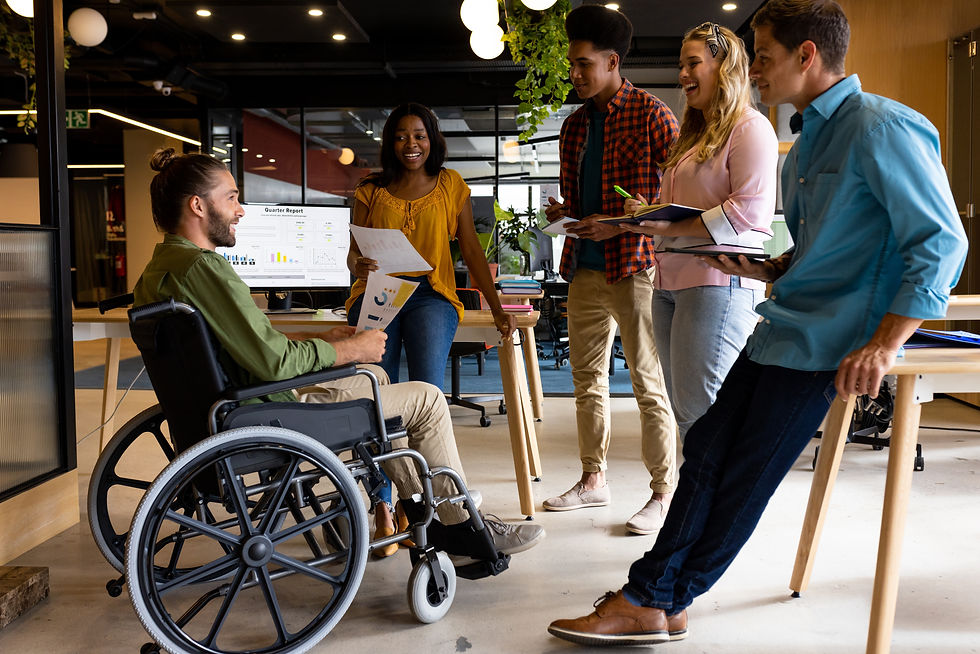Inclusion. Use Your Privilege.
- Meg O'Connell

- Jun 18, 2020
- 3 min read
Updated: Jul 21, 2020

It has been an extremely difficult couple of weeks.
The world is responding to the brutal deaths of three black Americans Ahmaud Arbery, Breonna Taylor, and George Floyd. Black Lives Matter protests have happened in all 50 states, and 18 countries making it the largest civil rights movement the world has ever seen.
The senseless killings have forced us to face our views and perceptions on race, opportunity, injustice, education, participation, access, equity and inclusion. This can result in uncomfortable and emotional conversations - but we MUST have them.
Over the past 20 years, almost every company in the world has conducted diversity and inclusion (D&I) training. As I thought about the training(s) I’ve attended, and even the ones I have conducted, the content only scratches the surface. How can you create an environment for people to address some of their long-held beliefs in 1–3 hours?
Training doesn’t dig deep into the real issues of equity, access and inclusion. But still, at the end of a training, we feel better about ourselves, we check the box for our personnel file, and leave believing, “I already knew that” or “this is for other people, not me, I’m good.”
Real change will only happen when we take personal responsibility to assess our views and beliefs about black and brown people (and every other group that’s different from you). This requires individual inner work. We need to hold ourselves accountable to listen, learn, and find ways to take action, and hope our collective actions make the world better.
Below are a few steps I am taking:
1. Check Your Bias: Implicit, explicit, or unconscious, it doesn't matter. It’s just vitally important to recognize how it shows up in your life. As a starting point, be conscious of your thoughts, and the words you choose. What are the quiet thoughts you have about people of color? The ones that were likely instilled as a child. How do the people around you talk about black and brown people? Words matter. Dismantle your negative perceptions and work to understand them. Challenge your thinking and beliefs.
2. Educate Yourself: Learn the issues, and understand what life is like for people of color in our society. Read books on what is really happening in America and I recommend a few to choose from: “The Hate You Give” by Angela Thomas, “How to be an Antiracist”, by Ibram X. KendiImagine. As you read and learn about the experiences of people of color, try to imagine if this was your child, brother, sister or anyone you love who was being underestimated or marginalized. How would you feel? How would you help? Could you protect them?
3. Find an Ally/Be an Ally: Find a person of color you can talk to who can share their experiences and help you understand the challenges they’ve faced. Listen and find out what you can do to support them. These can be tough and uncomfortable conversations. But they must be done. Become an ally. Stand up to bias when you hear or see it. Educate your network about what your learning, and help others see how they can be part of the change.
And finally, Use Your Privilege. Privilege doesn’t mean you were born with a silver spoon, or that you don’t have to work hard, or that you live a problem-free life. Privilege means that by virtue of the color of your skin, there are benefits you have that black and brown people don’t. Privilege provides greater access to capital, for home or business loans, which propels families into the middle class. Privilege provides access to more job opportunities which provides economic empowerment and access to better education.
Last week, I found myself using my privilege when my brother brought his 15 year- old son, and his son’s best friend for a visit. My nephew's friend is a 16 year old, young black man who is 6'4". His stature makes him look like a grown man. In view of all that’s taken place, I sent a text to half a dozen neighbors telling them they were here and he belonged.
I hated I felt it was needed to do this, but because of the protests and the high level of emotion in our country right now, I believed it was necessary. I wanted to ensure he felt safe, and my neighbors knew he was a welcomed guest. I used my privilege to protect him from un-welcomed glances, questions from neighbors, and quite possibly a phone call to the police.
Bottom-line: If you see something, say something. And if saying something isn’t enough, do something.
And, if you missed it, these same principles work for improving inclusion for people with disabilities, and any other marginalized population.
# BlackLivesMatter #InclusionMeansEveryone #BeADoer







Comments